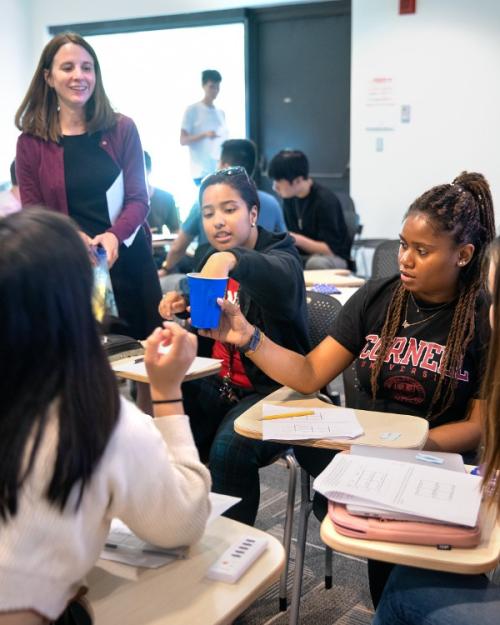A newly published study by Cornell researchers shows that university professors have responded to concerns about learning outcomes in STEM classes by greatly increasing the number of active-learning lesson plans they’re sharing with colleagues.
“A Scoping Review of Published Lesson Plans Showcases Two Decades of Change in Undergraduate Life Science Education Resources,” published Sept. 16 in the journal Life Sciences Education. First author is former Cornell postdoc Kira A. Treibergs, now professor of the practice at Wheaton College. The paper analyzes the number of articles describing active-learning lesson plans published between 2000 and 2022.
“These lesson plans include so much more than what faculty are doing in the classroom – they include worksheets, assessments, ideas for group work,” said Michelle Smith, Distinguished Professor of Arts & Sciences and senior associate dean for undergraduate education in the College of Arts and Sciences, and one of the study’s PIs. “And sharing these plans does more than help students to learn, they help professors, they help researchers studying educational change. They’re having ripple effects —people are downloading these lesson plans all over the world.” The research is funded by a grant from the National Science Foundation (NSF).
Other principal investigators on the paper are MacKenzie R. Stetzer of the University of Maine and Brian A. Couch of the University of Nebraska.
In 2011, a “Vision and Change” report from various groups — including the American Association for the Advancement of Science (AAAS) — called for notable changes in the way biology was being taught to undergrads.
In reaction to that edict, the biology education research community launched a new journal in 2014, Course Source, which publishes lesson plans from across the country in biology, physics and general STEM topics. The lesson plans are all published as Open Educational Resources (OERs), which means other university, and high school, teachers can use the lessons for their classrooms
“While some other journals have sections related to teaching tools, Course Source was the first journal to publish lessons from multiple subfields of biology in one place,” Smith said. Many of the articles that Treibergs and Smith included in this study came from Course Source.
At the same time, universities across the country – with leadership from Cornell – began to adopt active learning practices in their classrooms, a style that cuts back on lectures, instead using class time for students to practice skills, solve problems, struggle with complex questions and explain ideas through writing and discussion.
To measure the impact of the report and subsequent classroom changes, Treibergs, Smith and colleagues started with a database of 9,792 referenced articles to eventually whittle the list to 650 articles published between 2000 and 2022 that included undergraduate biology lesson plans.
“I coordinated a team of 10 people collaborating on this body of work,” Treibergs said. “So often with research you’re on your own, but in this case, much of what we did was side by side.”
The team found a significant uptick in the number of articles published after 2013 that focused on core concepts and competencies suggested in the “Vision and Change” report. Faculty in New York, California and Pennsylvania led the way in article publication from 2012 to 2022, with Cornell faculty and graduate students contributing to more than a dozen articles during that time.
“There’s been a lot of desire in the biology community for measurement and reflection on this initiative,” Treibergs said. “We’re so glad we now have evidence to show the impact this initiative has had.”
Raudiyah Onimode ‘26, a biological anthropology major on the premed track, helped screen and code the articles as part of her work as a Nexus Scholar and researcher in Smith’s lab.
“I didn’t even know education research like this existed, but as soon as I joined the lab, I was learning the skills I needed for this work,” Onimode said. “I was doing article analysis, full text screening and coding. We were also involved in giving feedback as the article was drafted. I felt very much like our opinions were valued.”
While the “Vision and Change” report is associated with the increase in lesson plan publication, another important factor, Smith said, is that many universities now encourage faculty to include articles such as these – which focus on teaching rather than research – as important parts of their CVs. “Not only do these help other professors in their teaching, but they help the careers of the authors,” Smith said.
The study is continuing, Smith said, with research now focused on the ways faculty are implementing these lessons across the U.S. and the impacts on student learning.
“We are having people teach the same lesson across multiple institutions in the U.S. and recording what happens in the classroom,” Smith said. “Then, we’re having students take common assessments.”
This work can guide researchers to the best tools for learning across multiple fields. “This is work that other fields can use, too,” Smith said.




